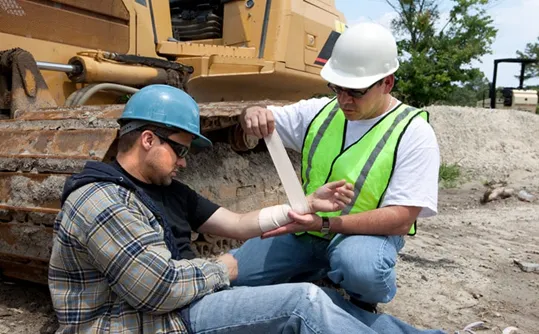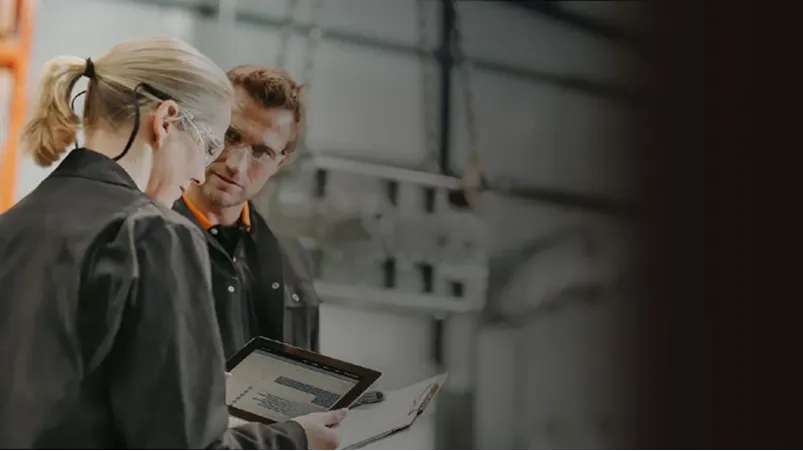Table of Contents
By Phil Molé, MPH
Welcome to the latest installment in our AI and EHS blog series! Here’s a recap of what we’ve covered so far:
- Post one— we provided a general overview of the topic, introducing it to EHS pros curious to learn more about the ways AI can support their life’s work of keeping people safe.
- Post two— we took a closer look at machine learning (ML) and its relevance to EHS professionals like you.
- Post three— discussed why AI offers a generational opportunity to improve EHS management, focusing on its ability to help quickly assess and control major safety risks.
- Post four— focused on why speed matters in EHS management, and how AI specifically delivers better risk insights, faster.
- Post five — discussed how AI can facilitate detection of potential for severe injuries and fatalities (PSIF) risks lurking within the details of incident reports for less serious incidents, like near misses.
- Post six — discussed how AI helps you to improve one of your key risk assessment tools – job safety analysis (JSA).
In this new post, we’ll discuss how AI can improve your incident management process, so that you have better records to provide better insights to improve safety management.
AI Supports Better Incident Descriptions
Incident descriptions are an essential part of an investigation, which is why OSHA requires employers to complete them on Form 301 for every individual recordable injury or illness. You include a narrative account of the incident, focusing on key details like the causes/precursors of the event, who was involved, and the consequences, including whether it resulted in a hospitalization or emergency room visit.
OSHA enforcement officers have often noted that many employers’ Form 301s contained incomplete information, which reduces their usefulness to employers for understanding why events occurred and preventing them from happening again. If this is a problem for records that employers need to maintain due to regulations, imagine how many inadequate descriptions there are for records of incidents that don’t have regulatory requirements for employers to document them! Yet, it’s many of these incidents, such as first aid injuries or near misses/close calls, that give employers the best chance to identify and control risks before a more serious incident occurs. First, you need to have a good description of the incident to work with.
AI description analyzers can assess the strength of your description, assign it a rating, and suggest improvements. For example, if you’re describing a chemical exposure incident, the AI will prompt you to include details about the identity of the chemical, how the chemical exposure occurred, and how many people were affected. With a better incident description, you’ll then ensure that you and your stakeholders will have the level of detail needed for effective follow-up.
AI Supports Better Root Cause Analysis (RCA)
Many incident investigations go wrong at the root cause analysis (RCA) stage, in which the objective is (or should be) to identify systemic reasons for the incident that management can address. There are several key reasons for this.
First, problems with incident descriptions cascade down to decrease the effectiveness of all subsequent parts of the incident investigation. If you haven’t captured complete and accurate details about the incident, you’re unlikely to be able to identify relevant root causes.

Another issue is that incident investigators, sometimes from personal beliefs about who or what “causes” incidents and sometimes because of haste or convenience, select “human factors” or “human error” as root causes. At best, this results in selection of a category that may be too vague to be useful, and at worst, it can result in blaming employees for safety outcomes that they did not control, because management created conditions that limited the ability of frontline workers to do their jobs safely.
Finally, while EHS incident management software can be a great help in completing incident investigations, they often don’t provide guidance in selecting root causes, assuming a level of background knowledge the investigator may not have. Presented with a laundry list of potential root causes with no prioritizations, the incident investigator is likely to pick root causes that don’t actually represent the underlying reasons why the incident occurred. And if you don’t accurately identify causes, you won’t effectively select corrective actions.
AI incident management software can help by leveraging insights from real EHS experts to identify relevant root causes, based on your strengthened incident description. Best of all, instead of getting a long list of unranked choices, you’ll get a prioritized list of root causes, so that you’re focusing on the right things.
AI Supports Selection of Better Corrective Actions
Selection of good corrective actions pays off all the previous work in investigating the incident, by selecting follow-up actions to address the risks that led to the incident happening.
This means that your ability to choose good corrective actions depends on how well you’ve done in describing the incident and assessing root causes. It also means that the AI capabilities you’ve already learned about above indirectly support better corrective actions by assessing incident descriptions and suggesting improvements, and by strengthening RCA.
However, AI capabilities can also directly improve corrective actions selections. EHS professionals sometimes struggle to select effective corrective actions because they lack the large datasets of incidents necessary to recognize which corrective actions work effectively with which root causes. Incident management software with AI features can recommend appropriate corrective actions based on your improved incident description and root cause analysis, using the massive datasets of incident data it’s been trained on.
As mentioned in another recent blog post in this series, the ultimate benefit of better incident management is also to be able to specifically detect and address potential for severe incidents and fatalities (PSIF) risks. There is AI capability to flag those risks even when they’re buried in the details of incident reports for less severe incidents, like near misses/close calls. Additionally, the AI capabilities for incident descriptions, root causes and corrective actions also help by improving description strength to better identify PSIFs, assess the primary reasons the risks exist, and select the right controls to reduce risks.
In short, AI software features give you the insights you need to do better incident investigations that yield better insights.
Looking for More Information on AI and EHS?
Stay tuned for future installments of our AI and EHS blog series, where you’ll learn more about AI, specific use cases for AI in EHS management, considerations when evaluating EHS software and vendors, and more!
In the meantime, you can visit our AI Glossary & Learning Hub to continue learning on your own. There, you’ll find a curated list of resources covering various aspects of AI and EHS, as well as definitions of common terms.
We also invite you to download and read our new white paper, “Why EHS Professionals Can’t Afford to Ignore AI.” You’ll get a deep dive into all of the reasons why EHS pros like you have a generational opportunity to use AI to pivot from a reactive safety management approach to a proactive approach that reduces injury rates and fosters a positive safety culture. From there, you can also get some guidance on what to look for when selecting an EHS software vendor with AI capabilities with our new AI vendor evaluation checklist.
And for a deep dive into AI and EHS and a chance to participate in a Q&A, you can also register for our upcoming live webinar on 11/4! Hope to see you there.
Let VelocityEHS Help!
If you’re ready to jump to the part about how Velocity can help, we’re standing by to talk!
Our capabilities include AI PSIF Insights, and AI-enabled enhancements to help you improve root cause analysis, strengthen incident descriptions and support better corrective action selections. And those are just some of the ways our software can help you level up your safety performance.
In fact, why not see for yourself how we can help? Get in touch today to set up a meeting so you can see our software in action!

